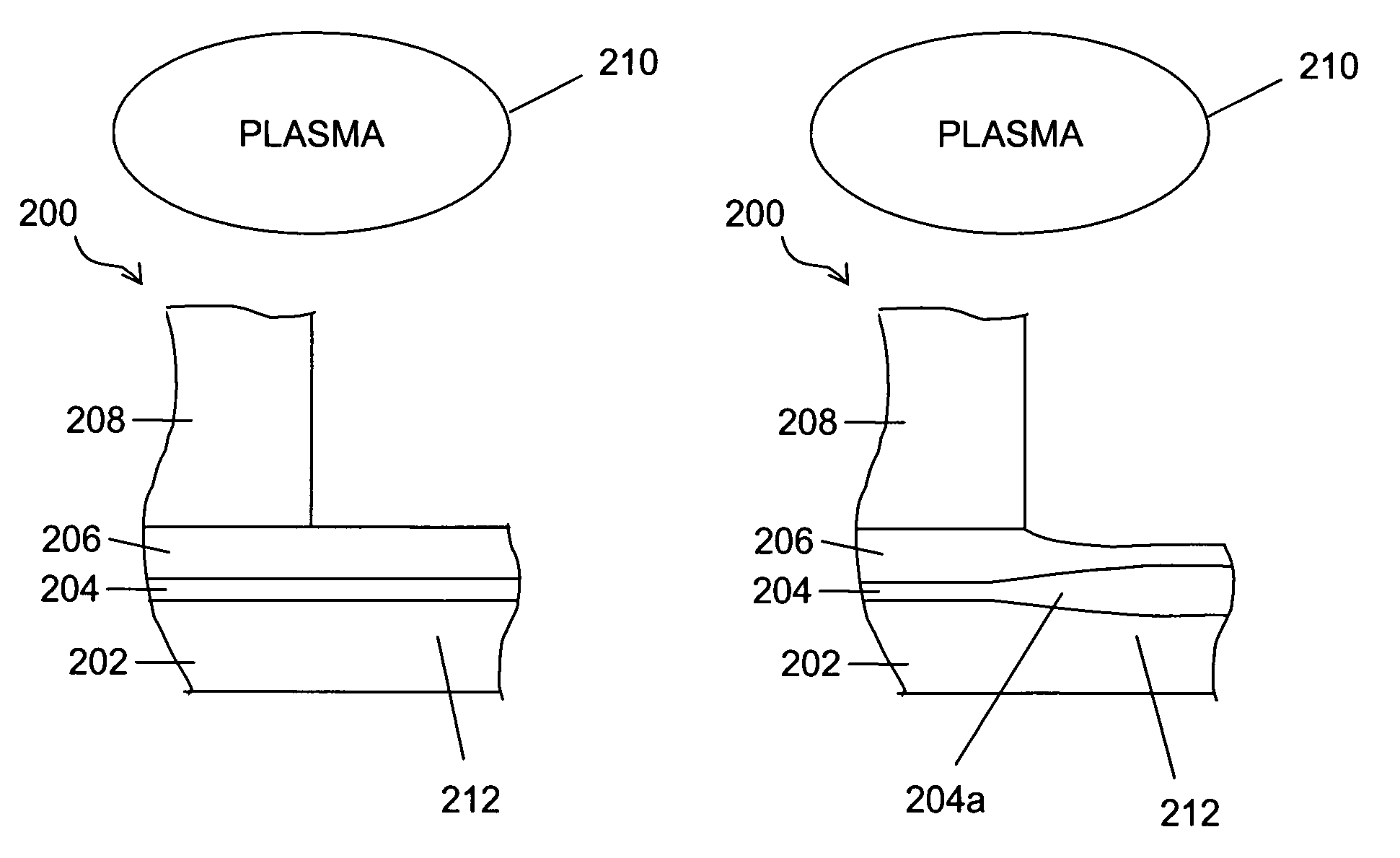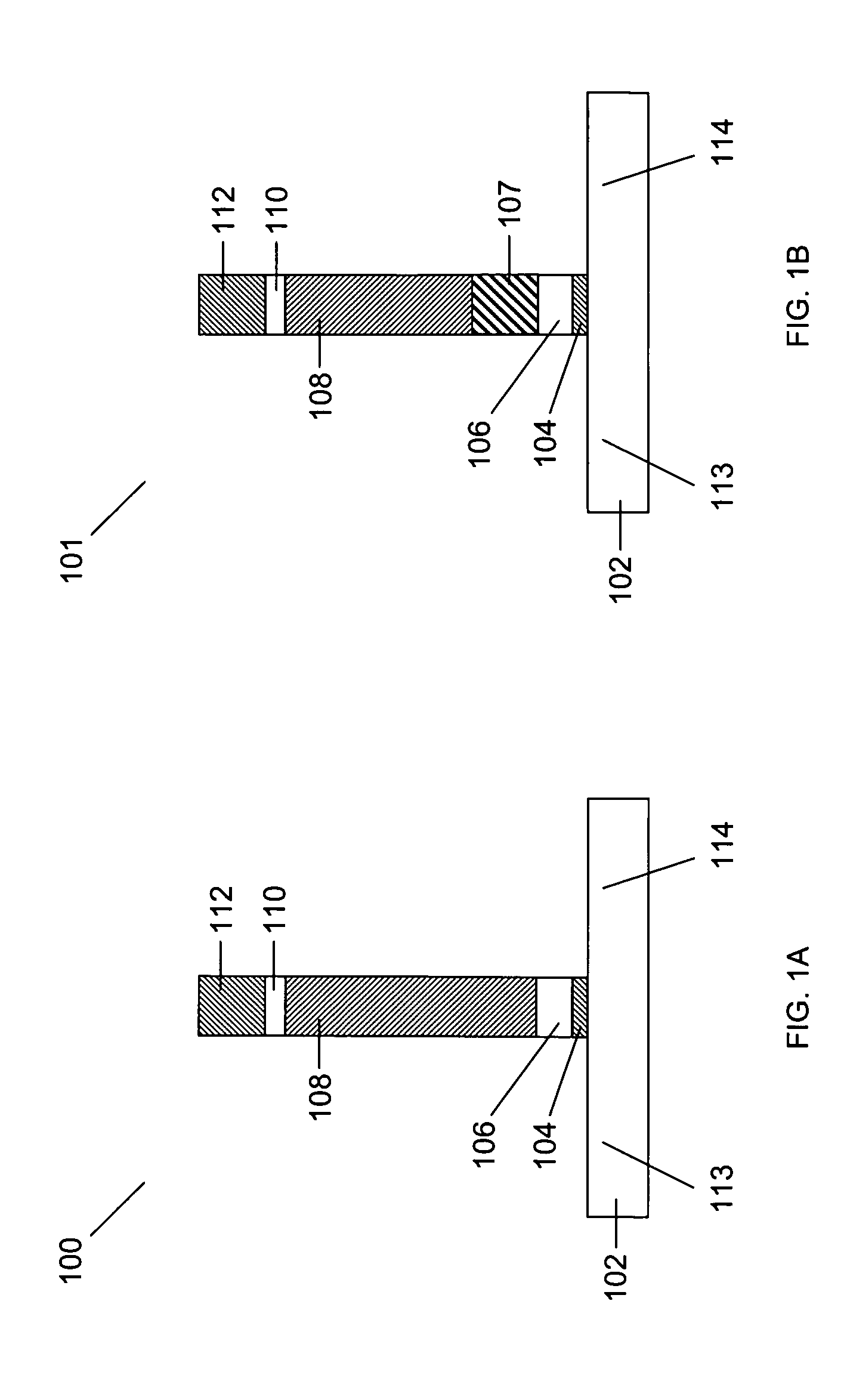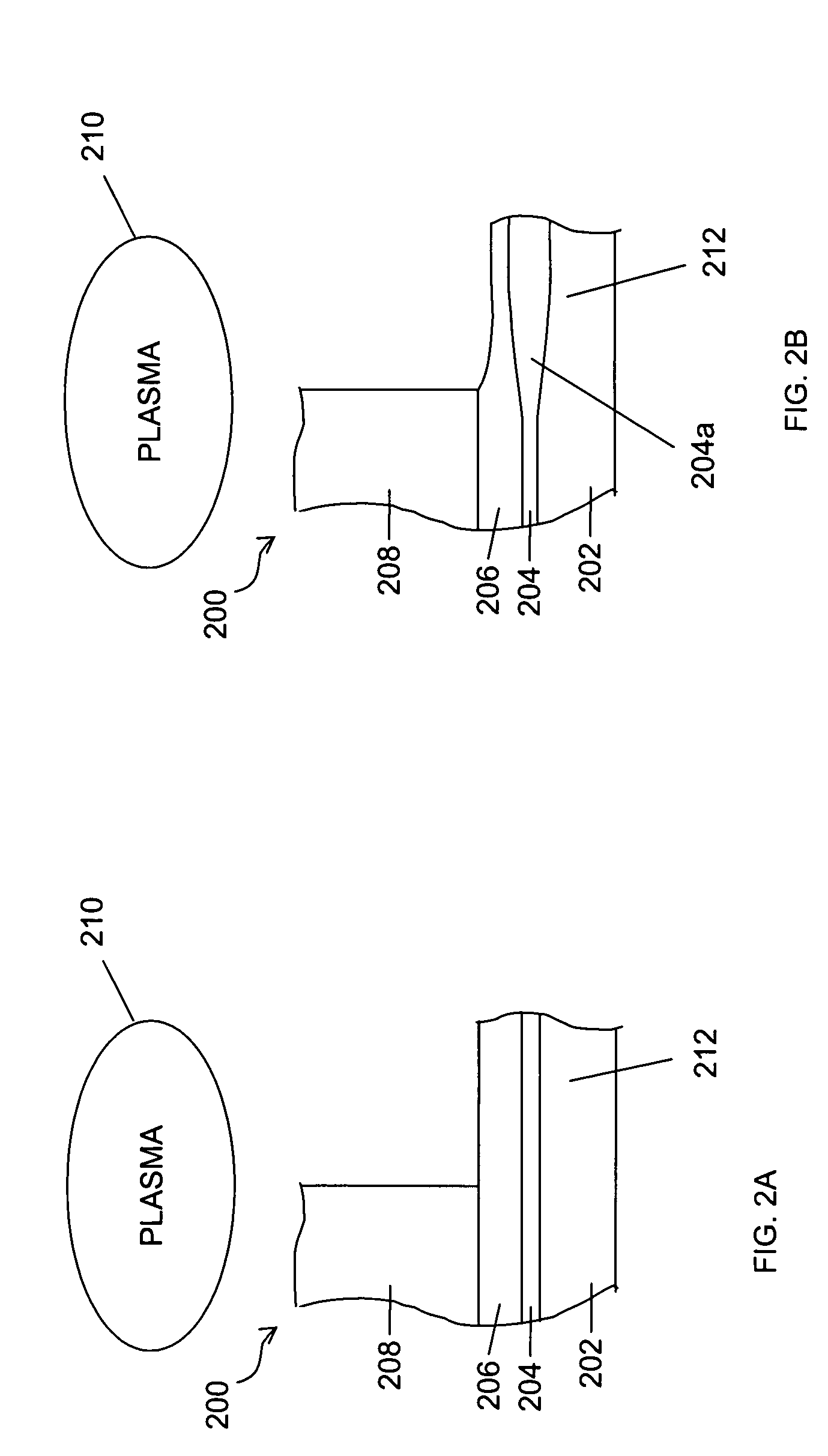Method and system for forming a feature in a high-k layer
a technology of high-k layer and feature, applied in the field of semiconductor processing, can solve the problems of process development and integration issues, oxide interface layer may need to be thin, and the overall dielectric constant of the gate stack, so as to reduce the formation of oxide interface layer, improve operational and/or reliability characteristics, and reduce the negative electrostatic charge
- Summary
- Abstract
- Description
- Claims
- Application Information
AI Technical Summary
Benefits of technology
Problems solved by technology
Method used
Image
Examples
example
Plasma Etching of a HfO2 High-K Layer using HBr Plasma
[0058]A gate stack containing a 40 Å thick HfO2 high-k layer overlying a 5 Å thick SiOxNy interface layer on a Si substrate was exposed to a plasma containing a HBr etch gas. The process conditions included a HBr gas flow rate of 400 sccm and a process chamber pressure of 20 mTorr. The plasma processing system was a capacitively coupled plasma system as schematically shown in FIG. 5. The present inventors found that providing 40 W of power on the substrate holder can remove the HfO2 at 370° C.; however, swelling of the interfacial layer still existed. Thus, the present inventors selected an RF power that further reduces the oxide swelling in accordance with the present invention. In this example, the top electrode power was reduced from 1,000 W to 200 W and the RF power applied to the substrate holder was increased from 40 W to 50 W.
[0059]FIG. 9 shows a TEM image of a gate stack following plasma processing of the gate stack accor...
PUM
 Login to View More
Login to View More Abstract
Description
Claims
Application Information
 Login to View More
Login to View More - R&D
- Intellectual Property
- Life Sciences
- Materials
- Tech Scout
- Unparalleled Data Quality
- Higher Quality Content
- 60% Fewer Hallucinations
Browse by: Latest US Patents, China's latest patents, Technical Efficacy Thesaurus, Application Domain, Technology Topic, Popular Technical Reports.
© 2025 PatSnap. All rights reserved.Legal|Privacy policy|Modern Slavery Act Transparency Statement|Sitemap|About US| Contact US: help@patsnap.com



